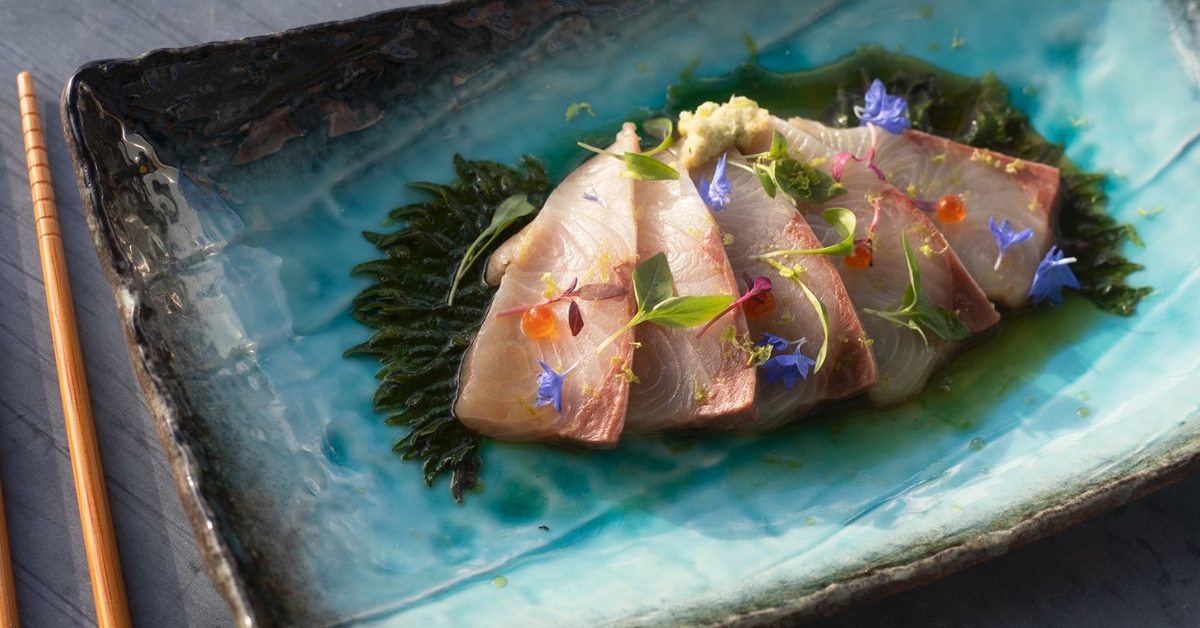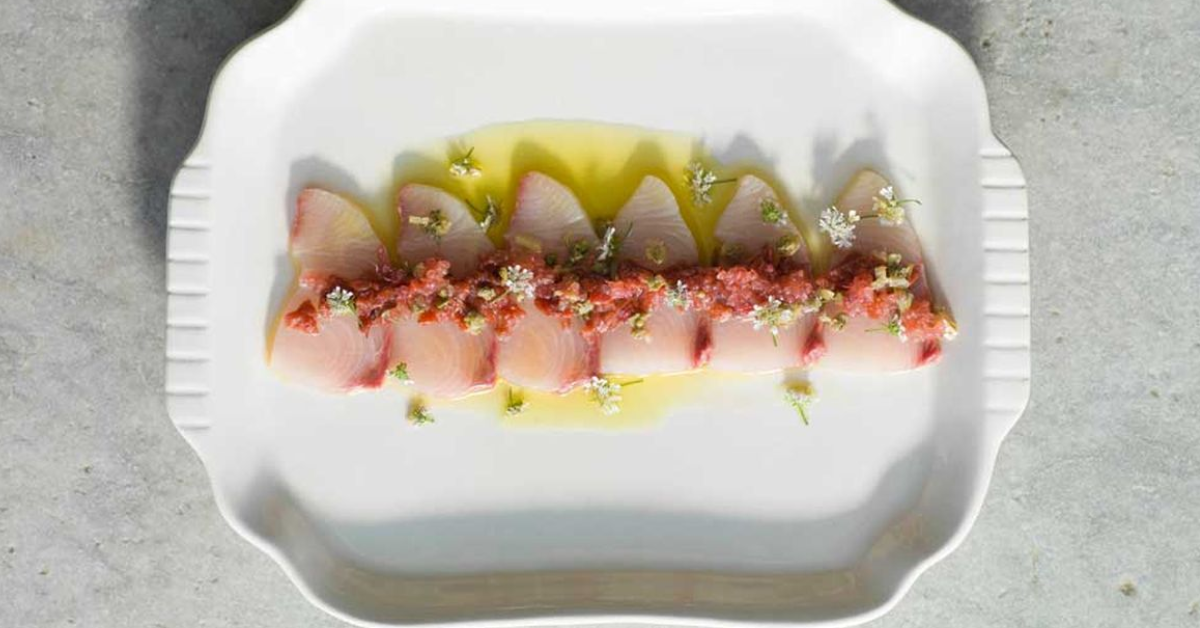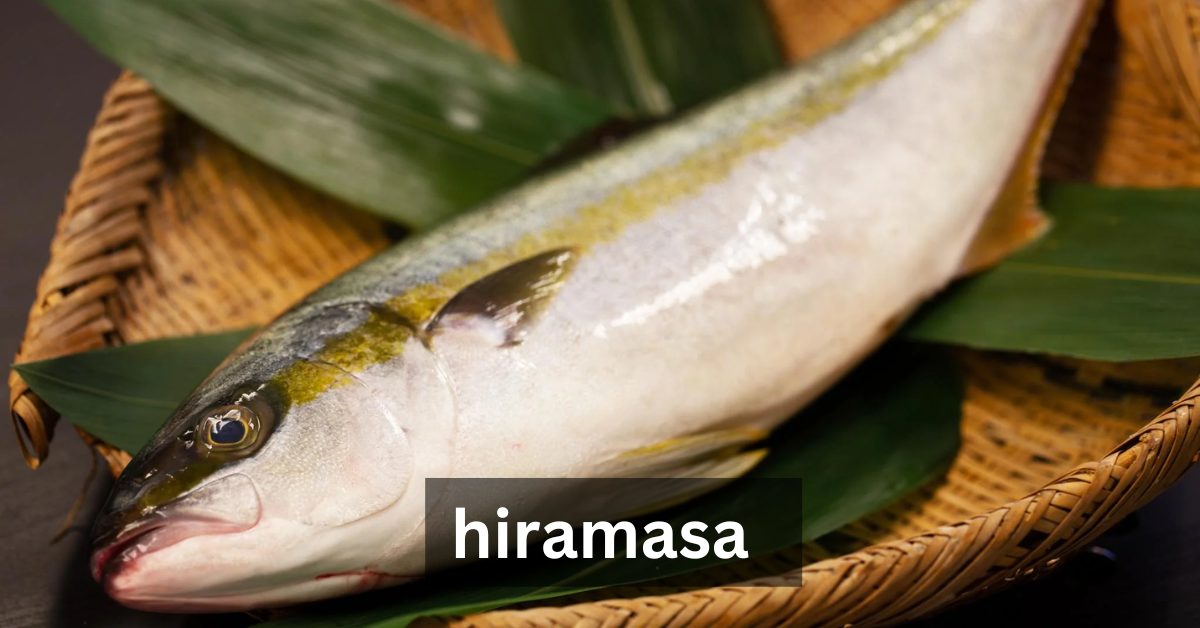Hiramasa has a milder flavor and firmer texture compared to Hamachi, which has a richer, fattier taste. Known for its firm texture, delicate flavor, and remarkable versatility, Hiramasa offers a wealth of possibilities for chefs and food enthusiasts alike. Whether you’re a seasoned sushi chef or someone looking to explore new flavors in seafood, Hiramasa stands out as an exceptional ingredient. Its mild taste, combined with its ability to adapt to various cooking techniques, makes it a staple in both traditional and modern kitchens. Beyond its culinary appeal, Hiramasa’s health benefits and sustainable farming practices enhance its reputation as a premium choice for seafood lovers.
Hiramasa (Seriola lalandi) is primarily sourced from subtropical and temperate waters, with a strong presence in regions such as Japan, Australia, and New Zealand. These areas are known for their clean, pristine oceans and well-regulated aquaculture practices, which ensure that Hiramasa maintains its superior quality. In Japan, Hiramasa is celebrated not only for its culinary significance but also for its symbolic meaning, often appearing during special festivals and celebrations. Australia and New Zealand, on the other hand, have become prominent hubs for sustainable Hiramasa farming, offering a consistent supply of this exquisite fish year-round. The controlled environment of these farms plays a crucial role in preserving the fish’s freshness and flavor.
Hiramasa shares a close relationship with other popular species like Hamachi and Kampachi, yet it sets itself apart with its slightly milder flavor and firmer texture. Hamachi, often younger and fattier, provides a richer, oilier experience, while Kampachi stands out with its umami richness. Hiramasa, however, strikes a perfect balance between sweetness and creaminess, making it a versatile ingredient that works well in both raw and cooked dishes. This unique profile allows chefs to craft a variety of dishes, from delicate sashimi to robust grilled preparations.
Culinary Uses of Hiramasa

Sushi and Sashimi Preparations
Hiramasa has become a staple in sushi and sashimi, where its buttery, clean flavor is cherished by sushi enthusiasts around the globe. Its firm texture ensures that it holds its shape even after being thinly sliced, making it ideal for precise, beautiful presentations. Whether served with soy sauce, wasabi, or paired with pickled ginger, Hiramasa enhances the traditional sushi experience. Its ability to absorb the subtle flavors of condiments without overpowering them makes it a top choice for both seasoned sushi lovers and those just beginning to explore the world of raw fish.
Grilled and Seared Hiramasa
Grilling or searing Hiramasa elevates its natural flavors to new heights. The high fat content allows it to develop a crispy, golden crust while keeping the interior tender and moist. A simple seasoning of salt and pepper or a light brush of olive oil brings out the fish’s natural richness. Grilled Hiramasa pairs wonderfully with roasted vegetables, fresh salads, or citrus-based sauces, creating a well-rounded dish perfect for any occasion. The versatility of Hiramasa shines through in its ability to adapt to various flavors and cooking methods, making it a go-to for chefs experimenting with new culinary creations.
Ceviche and Raw Preparations
For those who prefer their seafood in its most natural state, Hiramasa ceviche is an absolute delight. Marinated in citrus juices such as lime or yuzu, the fish absorbs the vibrant acidity, resulting in a refreshing dish bursting with flavor. The addition of fresh cilantro, chili, and onions complements its delicate taste, making it a popular choice in upscale dining environments. Its high fat content also ensures that it retains a smooth texture even when marinated for extended periods, making Hiramasa ideal for ceviche or tartare creations.
Other Innovative Uses in Modern Cuisine
The culinary world continues to push boundaries with innovative uses of Hiramasa. Chefs are experimenting with techniques like miso glazing, smoking, and even incorporating it into fusion dishes such as sushi burritos and seafood tacos. Its delicate flavor and firm structure allow it to blend seamlessly into modern cuisine, where creativity knows no limits. Whether it’s paired with a tangy ponzu sauce or a rich beurre blanc, Hiramasa continues to inspire culinary exploration.
Flavor Profile and Texture
Delicate Flavor and Firm Texture
One of the most distinguishing features of Hiramasa is its delicate flavor. Unlike stronger-tasting fish, Hiramasa offers a refined, slightly sweet profile that makes it versatile enough to pair with a variety of seasonings and accompaniments. Its firm texture enhances its adaptability, allowing it to maintain its shape across different cooking methods—whether it’s being sliced for sushi or grilled to perfection. This combination of flavor and texture ensures that Hiramasa remains a top choice for both traditional and contemporary seafood dishes.
Comparison with Other Popular Fish (e.g., Yellowtail, Salmon)
Hiramasa’s flavor profile is distinctively different from Yellowtail and Salmon. While Yellowtail has a richer, fattier taste, and Salmon is known for its oily, bold flavors, Hiramasa provides a more balanced approach. Its mild, buttery taste makes it easier for those unfamiliar with seafood to enjoy, yet it still carries enough depth to satisfy the most discerning palates. Additionally, Hiramasa’s firmer texture ensures that it holds up well to various cooking techniques, maintaining its appeal across different preparations.
Nutritional Benefits of Hiramasa
Rich in Omega-3 Fatty Acids
Hiramasa is a nutritional powerhouse, particularly rich in Omega-3 fatty acids. These essential fats contribute significantly to heart health, reducing inflammation, and supporting cognitive function. Consuming Hiramasa on a regular basis helps promote cardiovascular well-being, making it an excellent choice for health-conscious individuals. The balanced ratio of Omega-3s to Omega-6s ensures that Hiramasa supports a variety of physiological functions, providing a sustainable source of nourishment.
High Protein Content
Another key nutritional benefit of Hiramasa is its high protein content. With lean muscle-building protein, it aids in muscle repair and provides the energy needed for an active lifestyle. Its low-fat profile complements the high protein, making it an ideal option for those maintaining a healthy diet or following fitness routines.
Vitamins and Minerals (Vitamin D, Selenium, Potassium)
In addition to Omega-3s, Hiramasa is abundant in essential vitamins and minerals. Vitamin D promotes bone health and enhances immune system function, while selenium acts as an antioxidant, protecting cells from damage. Potassium is crucial for maintaining healthy blood pressure levels, making Hiramasa an all-around nutritional superstar.
Low-Calorie Seafood Option
Hiramasa’s nutritional profile is complemented by its low-calorie content. It offers a satisfying seafood experience without overloading on calories, making it an excellent choice for those looking to manage their weight while enjoying high-quality protein and essential nutrients.
Sustainable Farming and Hiramasa Aquaculture
Practices of Eco-Friendly Hiramasa Farming
Sustainability is at the forefront of Hiramasa farming. Modern aquaculture practices emphasize minimizing environmental impact through responsible management. Farms in regions such as Australia and Japan utilize advanced feed systems, reduce waste, and focus on maintaining clean, healthy aquatic environments. By adopting eco-friendly methods, these farms ensure that the seafood is both environmentally sustainable and of the highest quality.
Importance of Sustainability in Seafood
Sustainability is crucial in the seafood industry, as overfishing has led to the depletion of wild fish populations. Farmed Hiramasa plays a pivotal role in balancing demand while protecting natural ecosystems. Sustainable practices not only ensure the health of marine life but also provide consumers with peace of mind knowing they’re supporting responsible seafood choices.
Impact on Wild Fish Populations
By reducing the pressure on wild fish populations, farmed Hiramasa allows for the preservation of biodiversity in marine ecosystems. This responsible approach to seafood farming helps maintain the delicate balance of ocean habitats and supports long-term sustainability efforts.
Selecting and Preparing Hiramasa
How to Choose Fresh Hiramasa
Selecting high-quality Hiramasa requires attention to detail. Fresh fish should have bright, clear eyes, shiny, metallic skin, and a firm texture that bounces back when pressed. Avoid fish that appears cloudy or has a strong, fishy odor, as these signs indicate lower quality. When purchasing fillets, seek those with a vibrant pink hue and a moist, glossy surface to ensure optimal freshness.
Storage Tips and Handling
Proper storage is essential to maintaining the quality of Hiramasa. Store it at temperatures between 32°F to 38°F (0°C to 3°C) and consume it as soon as possible for the best taste and texture. Keeping it properly chilled helps preserve its natural flavors and prevents spoilage.
Popular Cooking Methods (Grilling, Searing, Pan-Frying)
Hiramasa is remarkably versatile when it comes to cooking techniques. Grilling, searing, and pan-frying allow it to showcase its distinct flavors while maintaining a delicate, flaky interior. Each method enhances its natural richness and ensures it pairs effortlessly with a variety of side dishes and sauces.
Pairing Hiramasa with Wine and Side Dishes
Wine Recommendations (Sauvignon Blanc, Riesling, Rosé)
Hiramasa pairs beautifully with light, crisp white wines such as Sauvignon Blanc and Riesling. The acidity in these wines complements the buttery texture of Hiramasa, enhancing its delicate flavors. Alternatively, a dry rosé can add a refreshing touch, making for an elevated seafood experience.
Best Side Dishes for Hiramasa
For the perfect meal, side dishes such as roasted vegetables, fresh salads, or citrus-based salsas complement Hiramasa beautifully. These sides balance the richness of the fish, creating a harmonious dining experience. Innovative flavor combinations, like miso-glazed sides or spicy fish tacos, further enhance its versatility.
Innovative Flavor Combinations
From herbal infusions to spice blends, chefs continue to experiment with Hiramasa to create unique flavor profiles that appeal to both traditionalists and culinary innovators.
Cultural Significance of Hiramasa

Hiramasa in Japanese Traditions and Festivals
Hiramasa holds deep cultural significance in Japan, where seafood symbolizes prosperity, good fortune, and abundance. During traditional festivals and special occasions, high-quality fish such as Hiramasa is served as a centerpiece, reflecting its importance in Japanese cuisine and celebrations.
Symbolism of Prosperity and Abundance
In Japanese traditions, seafood is not only a source of nourishment but also a symbol of wealth and well-being. Hiramasa’s presence in these celebrations underscores its essential role in embodying these values.
Conclusion
Hiramasa is more than just a seafood delicacy; it represents the perfect fusion of tradition, sustainability, and culinary innovation. From its origins in Japan, Australia, and New Zealand to its use in high-end sushi restaurants and home kitchens alike, Hiramasa has established itself as a premium fish with unparalleled versatility and health benefits. Its mild, yet rich flavor, combined with its firm texture, makes it a beloved choice for chefs and seafood enthusiasts. Whether served raw in sushi, grilled for a smoky finish, or prepared in creative fusion dishes, Hiramasa continues to inspire and delight. As the demand for sustainable seafood grows, Hiramasa stands out as an eco-friendly and sustainable option that supports both environmental conservation and exceptional taste.
Frequently Asked Questions
Can Hiramasa be used in raw preparations like sushi?
Yes, Hiramasa is ideal for raw preparations such as sushi and sashimi due to its firm texture and delicate flavor.
Is Hiramasa sustainable?
Yes, Hiramasa is often farmed sustainably through eco-friendly aquaculture practices to minimize environmental impact.
What are the nutritional benefits of Hiramasa?
Hiramasa is rich in Omega-3 fatty acids, high-quality protein, and essential vitamins like Vitamin D, selenium, and potassium.
Where can I buy fresh Hiramasa?
You can purchase fresh Hiramasa at specialty fish markets, online seafood retailers, or from sustainable seafood farms.
Stay in touch to get more updates & alerts on BaddieHub! Thank you



